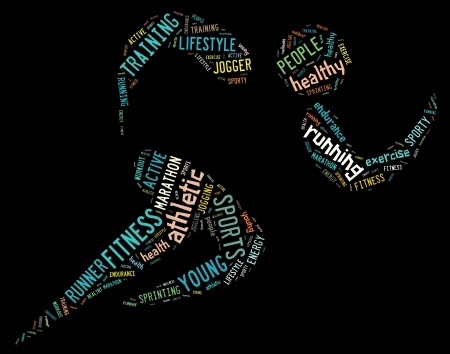
As trainers, we have many goals for our diverse client base. Most trainees are striving to improve body composition, lose weight, increase endurance, and in general become healthier versions of their current selves. To accomplish this effectively and safely, we must be aware of any potentially dangerous exercises when designing a workout program; this requires us to be vigilant about a client’s underlying health issues.
A client of mine, who has made considerable progress through resistance training, diet modification, and an increase in cardio exercise, informed me very early on that she has always had low blood pressure, or chronic hypotension. Since this was not a situation that I often encounter, it was important for me to have some background on the subject.
Be Proactive With Insight
Hypotension is defined as a blood pressure reading below 90/60mmHg. The top number indicates the pressure of blood in the blood vessels when the heart is contracting to pump blood around the body. Most doctors consider blood pressure to be chronically too low only if it causes noticeable symptoms. Other experts claim that even if only one number is in the low range, the individual should be considered hypotensive.
There has always been a tremendous focus placed upon high blood pressure, or hypertension, in our society. Many medications are prescribed to treat this condition. Dietary restrictions, such as limiting one’s salt intake, propelled the nutritional world to develop sodium-free herbs and spices. The ever-popular Mrs. DASH is aptly named: Dietary Approach to Stopping Hypertension. Since the prevalence of high blood pressure is seen in disproportionately high numbers compared to hypotension, there previously has not been much advice available to those individuals who wished to maintain an active lifestyle with little to no risk.
Become Aware Of The Symptoms
During exercise, muscles require an elevated amount of both blood and oxygen. This increase in demand can lower blood pressure, thereby decreasing blood flow to the brain. For individuals who are already coping with hypotension, therefore, exercise has the potential of further exacerbating the problem. Knowing and recognizing the symptoms of dangerously low blood pressure is very important for a trainer.
As is the case with many underlying health issues, symptoms of hypotension vary on a continuum. Some individuals experience no symptoms at all, while others might have a brief sensation of feeling dizziness when standing up too quickly. While this may clear within seconds, some hypotensive clients might present with much more significant symptoms, such as sweating, slowing of cognitive processes (often referred to as ‘brain fog’), weakness, unusual fatigue, an irregular pulse, blurring of vision, nausea, a feeling light-headedness, and even fainting.
A much more common occurrence, which many of us may have experienced once or twice, is that of orthostatic hypotension; we often find ourselves saying “Whoa! I stood up too fast!” In fact, any sudden postural change during exercise, such as rising from a position of the head being below or level with the heart, poses a risk for bringing about orthostatic hypotension. Other situations that may bring about a drop in blood pressure include standing in one place for a long period of time (think of waiting in line for a ride at Disneyworld) or allowing oneself to become dehydrated, commonly seen with outdoor exercisers. A change of 20 points in blood pressure can be quite significant. If such a drastic plummet can happen for individuals and avid exercisers whose blood pressure hovers in the normal range, it becomes infinitely more dangerous for a client who is already hypotensive.

While we know what happens in an individual’s circulatory system, there can be many other reasons why a client may exhibit chronic low blood pressure. Common causes include diabetes, allergic reactions, heart disease and shock. It is interesting to note that heart disease may render an individual either hypertensive or hypotensive, depending upon the nature of the cardiac disorder.
Designing a Safer Workout
Because a sudden change in posture can bring on symptoms, a prudent trainer can design a workout that is effective while also avoiding exercises in which the head is lifted suddenly from below or level with the heart. For any trainers who also wear a yoga instructor hat, this can be a bit challenging. Experts suggest that a hypotensive yoga participant be instructed to refrain from engaging in any positions requiring movement from a supine to a seated position. Also contraindicated are poses that move the body from a seated to a standing position, as well as front-bending exercises (the risk here being the second half of the movement, rising up).

In terms of resistance training, being aware of which exercises may have a negative impact upon a hypotensive client is helpful in designing a workout. Any exercise where forward flexion or sitting up between sets is involved may be problematic. A few examples are bench press, sit-ups, bent-over rows, reverse flies, and step classes where there is forward bending. Before thinking that a productive workout is unattainable, consider the following exercises and find creative ways to incorporate them into a training session: rowing, lower-body resistance training, light upper-body resistance training, walking, cycling and jogging. Before engaging your client in his training regimen, provide a warm-up that allows the heart rate to elevate gradually. At the end of the session, a safe cool-down is one performed while standing or sitting, as opposed to one in which the client must be in a horizontal position.
Food and Drink—Think!
Knowing about and sharing the information that he or she has chronic low blood pressure is definitely the client’s responsibility. There are, however, gentle reminders you can offer for life outside the fitness center. A prime example is nutrition-based. The body requires blood as it attempts to digest food. Suggest that your client eat smaller meals prior to training, and be certain to stress the importance of hydration.
Researchers at the University of North Carolina found that chronic hypotensive individuals as well as those with orthostatic hypotension are 1.34 times more likely to develop heart failure than patients whose blood pressure hovers within a normal range. Knowing that exercise is always beneficial in staving off many illnesses, a client with low blood pressure will appreciate your dedication to writing a safe program in which they can engage.
Join the conversation on our Facebook page to comment on this article or ask questions.
If you’re an NFPT Trainer, join our Facebook community group!
REFERENCES






